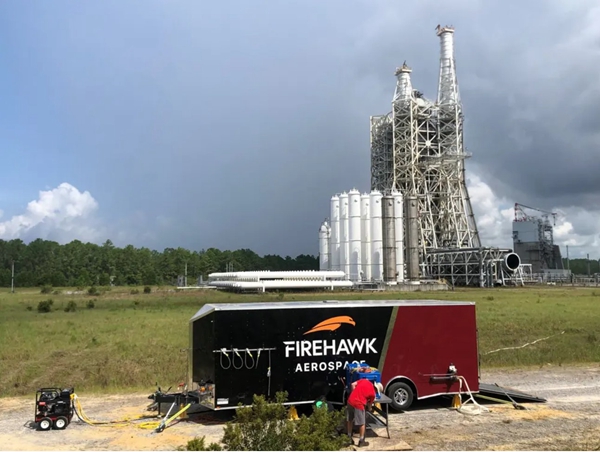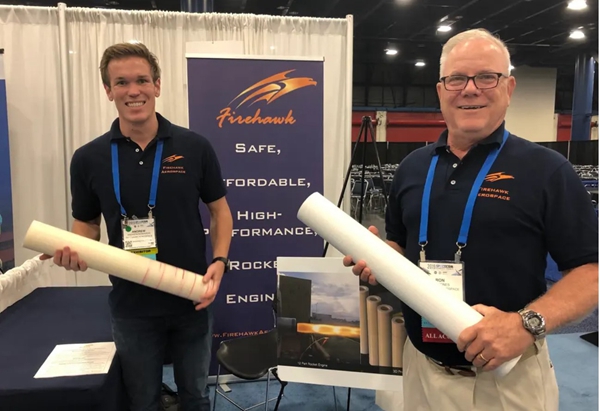September 28, 2022 - FirehawkAerospace, a company dedicated to providing safer and more stable new solid fuels, has opened a new Series B round of funding and has successfully raised $15.5 million, although the company plans to raise more than $17 million. While today's rocket engines are already very advanced and powerful, they are powered by traditional fuels. Firehawk's development of new solid fuels and the introduction of large sums of money will help the company pass its next round of tests and complete its first real-world test of an intra-atmospheric suborbital launch.

Photo credit: Firehawk Aerospace
Two years ago, Firehawk entered the field of rocket engine additive manufacturing with new ideas for hybrid engines, and the breakthrough achieved by the company's CEO Will Edwards and chief scientist Ron Jones was to structure this fuel and 3D print it in a specially designed matrix. This structured solid fuel pellet is more stable than other fuels, is easier to transport and burns in a very predictable way. The company has designed engines around the concept and tested them on a smaller scale, although they've also been working on the kind of engine that could actually be used in space. But Firehawk says one of the printer's strengths is its adaptability.
Edwards said, "It's a unique engine that has throttling capability, is inexpensive to manufacture and is a parametric design so we can design for a missile interceptor system or a second stage booster."
In addition to better safety, printing the fuel pellets in different ways can produce different thrust characteristics. And the whole process can be safely slowed down, stopped and started again many times. While this is often the case with liquid rocket motors, it's not the case with solid rocket motors: they explode at 100 percent until they run out of fuel, which means you only get one shot and you have limited options for force vectoring, more like a race car driver than a regular car driver.

△Firehawk CEO Will Edwards (left) and Chief Scientist Ron Jones hold a 3D printed fuel tube Photo credit: Firehawk, Inc.
Edwards noted, "Our engine can replace a solid rocket engine with something that costs much less, with comparable fuel performance, but you can control its combustion, which is something the industry finds incredible. The demand for solid motors in defense and research is steady, and improved customizability and other features make Firehawk an attractive option for missions with different requirements.
The company recently conducted engine burn tests at Stennis Space Center under NASA oversight, and they are ready to fly - the final step before reaching a level of technical readiness that will allow the company to increase revenue.
In addition to second-stage boosters and missile interceptor systems, Edwards also suggested space propulsion such as satellite manipulation as a potential application. Firehawk's fuel is "inherently inert," making it much less of a burden for multi-payload launches, due to the volatility of the fuel, among other things, which is typically used in lower-pulse methods such as ion engines. Just think, you wouldn't want to put your satellite next to a barrel of kerosene, would you?
Firehawk is strictly an engine and is not intended to build satellites or any other space or aerial projects. They are simply providing thrust and the upcoming in-atmosphere demonstration demonstrates the capability of suborbital operation.
The new Series B funding will allow for more testing, more R&D and production of more engines to meet demand - although, predictably, with a company like Raytheon, confidentiality agreements prevent any specific description of the nature of that demand. So far, they have raised $15.5 million, but expect to reach $17 million soon.
The list of participants in this round is long, and it sets a record for the company's funding. The funding was led by Star CastleVC, with other participants including Raytheon, Draper & Associates, Goff Capital, CathexisVentures, Plains VC, VictorumCapital, Stellar VC CapitalFactory, Echo Investments, and Hemisphere Ventures.
While the engine currently being tested is almost ready for customer use, Edwards stressed that this is just the beginning. New applications are potentially just a few keystrokes away.
We can create really unique fuel particle geometries, and by changing the design, we can improve its performance," Firehawk said. It's just a matter of rewriting some code and uploading it to our 3D printer. The new funding will allow us to purchase and customize our own printer, CNC machine and test setup for deployment at a new location in Addison, Texas. We will be able to complete our next test campaign much faster."


